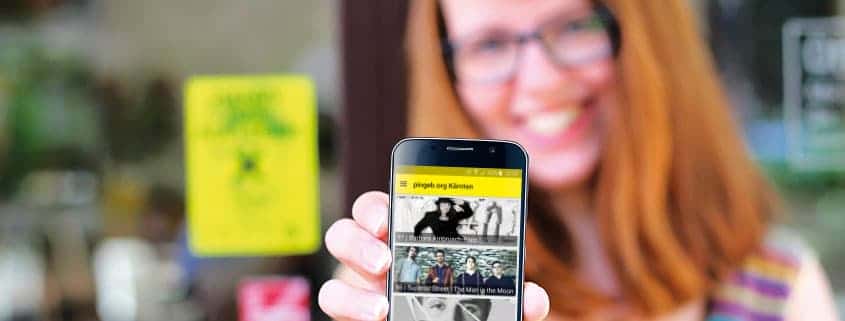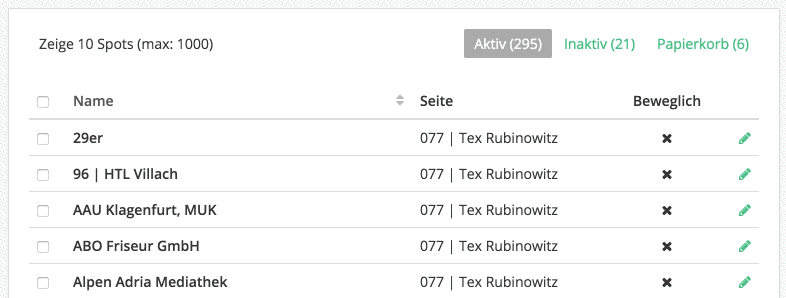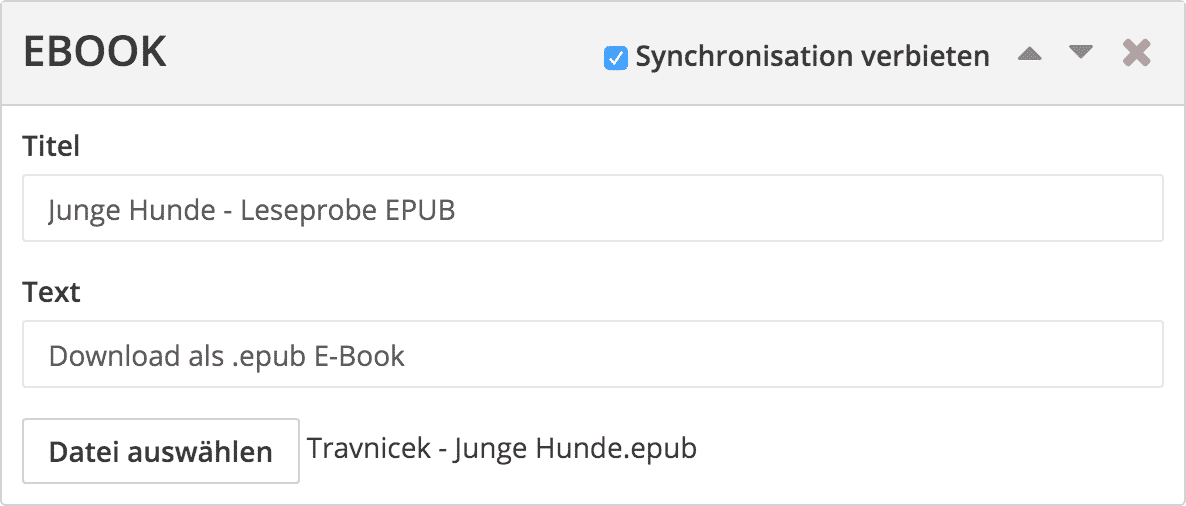This article reveals how Project Ingeborg (Web:pingeb.org) has been created and how easily such a project can be setup and run today with the technology of xamoom (the word “xamoom” comes from the West African language Wolof and means “sharing knowledge”).
xamoom’s journey began with Project Ingeborg. Georg and Bruno had one or two pints of beer in April 2012 when they were thinking about what could be done with NFC (Near Field Communication) and mobile phones. Quickly, an idea was born: Klagenfurt, which does not have a community library should be turned into a giant library in the public space.
The beginnings
Noticeable stickers shall be placed in public places (the first partner was STW-Klagenfurt, who provided 50 bus stops). The QR code on them and the NFC chip behind it should lead to digital content.
It only took a few weeks for the hobby project and its name (pingeb.org, a reminiscence to Ingeborg Bachmann) as well as a website to be created. The base then was WordPress. At the time, we worked with extremely complicated plugins for mapping places and redirecting URLs.
On July 2nd, 2012, we started the distribution of 70 public domain ebooks from Project Gutenberg at 70 locations in the city. The books always fitting the respective location. This should make the locations popular and create curiosity among the users.
The Bachmann Prize (Festival of German Literature) – our calculus – should guarantee attention for the project. This wasn’t exactly the case, only some local media reported about it. Later instead, one of our friends translated our press release into English and sent it to the editors of the tech blog Engadget. What followed was a global media storm because when Engadget writes about something (“Austrian city builds a public library with nothing but QR codes, NFC and stickers“) it gets copied around the world. After hundreds of articles – coverage from the United States to China and from Brazil to Russia – we simply stopped collecting the river of clippings.
Yes, even a network cultural project from the small town of Klagenfurt can get global media coverage!
Success with regional art
A month after the launch, on July 31st, the actual project began: From then on, regional artists were presented in public space on a regular basis. We ourselves did not even know back then all the bands or literature of the town.
pingeb.org should promote the sales of local artists with their digital pieces and get them additional awareness. New target groups (e.g. geeks who want to try the NFC for the first time) opened for local art & culture. At times, there was also a pingeb.org project in Graz. The project in Villach merged with Klagenfurt in 2015 and there are still independently run projects in the Austrian regions of Salzburg and Vorarlberg. Just before the start in Weimar city, a new life (a baby) came in between.
In August 2012, we submitted pingeb.org for the Bank Austria Art Prize, but we were not accepted. However, we tried again in 2013 and won the highest endowed art prize in Austria. If you are interested, we provide you our award-winning documentation for the final jury as a PDF-Download (30 MB, German only).
Previously, in November 2012, Georg announced the release of the WordPress plugin at TEDx Vienna. It was supported by the Austrian Internet Foundation, published under the open source license GPL 2 and had at times over 1000 installations. Although the number decreased, somewhere out there, there are still about 20 pingeb.orgs. The use of the plugin is indeed free, but really complicated.
From pingeb.org to xamoom
Ever since winning the Bank Austria Art Prize we knew that there was more potential behind our fundamental idea (connecting places and objects to the Internet). The prize money of 35,000 euros was invested in the foundation of xamoom.
The technology developed since April 2014 was originally intended only for use in the arts and culture sector. Soon, we realized that far more was possible. But one goal has always been big: great usability. One should be able to realize a Project Ingeborg without any deep technical knowledge. Every culture initiative should be able to bring art in public space.
How we run pingeb.org now
For setup and operation, neither a server nor special software is required. All it needs is a browser and login credentials. For rolling out smart stickers and an NFC capable Android device is needed.
With xamoom, you can offer a special page in one place and change it easily without having to replace the smart stickers. However, it is also possible to change a page in all places centrally. This is what we use for offering new discoveries of artists every week.
When on Friday a new artist goes online, all stickers on all locations are changed with a few mouse clicks.
Click, click, click and everywhere there is something new to read or listen on respective mobile websites.
The second core function of xamoom is publishing the artists on our website.
Project Ingeborg has another peculiarity: We do not want to be yet another site that offers free downloads. Whoever wants to discover new music and fresh literature from the region, has to do something for it. This way, the free sample (e.g. e-book with novel clipping or streaming a song) gets more appreciation.
However, we also want to publish the content on the website of Project Ingeborg without having to enter or update it twice (like before with the old WordPress plugin). For this, the clever content blocks of xamoom and the new xamoom WordPress plugin are used.
Pages are constructed out of blocks. In the example on the right, it starts with title, summary, and cover. Then there are three ebook blocks, a text, a picture, and yet another text block. At the bottom, there are four finger friendly link blocks.
If a page from xamoom gets integrated into a WordPress page or article (see an example of Cornelia Travnicek), this can be suppressed on the level of individual blocks. This means you only need to change the content in one place to make it consistent through all platforms and yet keep some parts “mobile exclusive”, i.e. only available on the smartphone when you are at the stickers.
This feature is also used for the discovery mode in smartphone apps. There is an app for iPhone and Android for pingeb.org. The articles are displayed without the corresponding samples until they have been unlocked on-site using a QR code, an NFC chip, a GPS geofencing or a Beacon.
Discount for cultural initiatives
Even if we are positioned much wider today, we do not deny our origin. We are proud to have made it as a cultural project to Austria’s Startup of the Year.
Because we are aware that cultural initiatives usually have good ideas but only a small budget, there are different price models for projects á la pingeb.org. Instead of 350 euros a month for xamoom Standard we offer it for just 349 euros per month (excluding VAT) – an amount that is affordable for every project. However, a prerequisite is that the cultural project (with max. 100 locations) will be implemented in the public space. The discount is valid if at least a free demo system is ordered by the end of 2015.
Even the cultural sector needs innovations. In many cases, they are even required to do so by public funds. And what could be more obvious than to combine art and culture with smartphones? This year, Project Ingeborg is supported by the province of Carinthia and the city of Villach with 2000 Euro and 800 Euro. Thank you!
Get started with xamoom
Starting your own cultural initiative and need help with that? Simply contact us at +43-463-930330 or write us an email: mail@xamoom.com and we will gladly help you.
PS: Yes, even if xamoom is a commercial company, this non-profit project remains very important to us. We demonstrate with it all the capabilities of xamoom to potential customers and it also forces us to constantly use our own product. Only this way can we detect bugs early and design new features.



